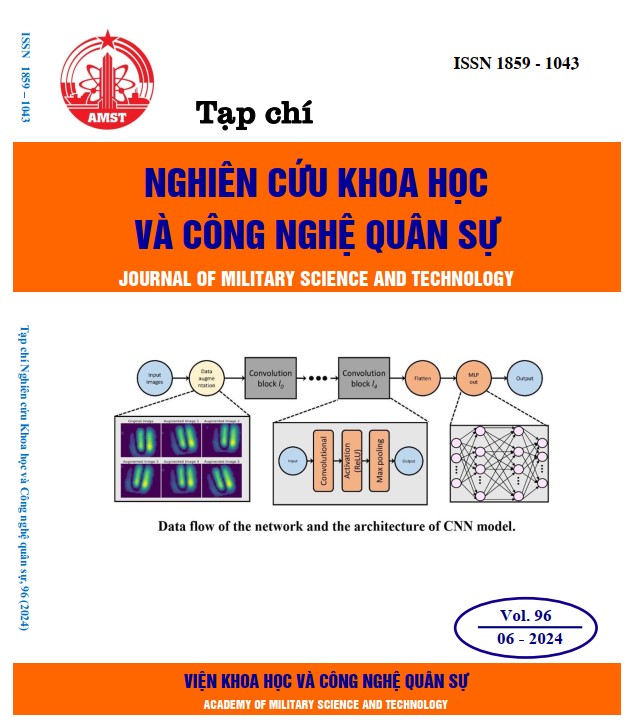Research in the manufacture of graphite-carbon composite materials for application in the manufacturing of seal ring
318 viewsDOI:
https://doi.org/10.54939/1859-1043.j.mst.96.2024.92-98Keywords:
Seal ring; Graphite-carbon composite materials; Low friction materials; Abrasion resistance materials.Abstract
The article presents some results in research on the manufacture and evaluation of composite materials based on graphite-carbon oriented applications in the manufacture of seal ring. Composite materials are manufactured using a 3-step process: 1. Hot pressing of the mixture from phenolformadehyde resin and graphite-carbon powder mixture; 2. Sinter at a temperature of about 900 oC for 8 hours to coke the resin; 3. After coking, adsorb the product with epoxy resin at a content of (4-5)%. The material after manufacturing has a density of (1.82 ± 0.04) g/cm3; hardness (105.1 ± 2) HRF; friction coefficient (0.1647 ± 0.008); abrasion (48.2 ± 1.6) µm. The results of analysis and evaluation show that the manufactured material has physical and mechanical properties equivalent to the material sample produced in Russia, and can be used in the manufacture of the seal rings.
References
[1]. “Двигатели В-2 и В-6, Техническое описание”, М.: Военное издательство, (1975).
[2]. Nguyễn Công Lý, Nguyễn Hoàng Vũ. "Nghiên cứu thiết kế, chế tạo khớp nối phục vụ việc thử nghiệm động cơ diesel B2 trên bệ thử AVL-ETC", Tạp chí Giao thông vận tải, 32-33, (2014).
[3]. Nhà máy Z153/TCKT, “Tài liệu kỹ thuật và QTCN sửa chữa động cơ diesel B2-B6”.
[4]. Nau B.S. “Research in mechanical seals”. Proc. Instn Mech. Engrs, Part C, 204 (C6), 349-376, (1990). DOI: https://doi.org/10.1243/PIME_PROC_1990_204_117_02
[5]. Мигунов В.П. и др. “Износостойкие и антифрикционные материалы для узлов трения”. ВИАМ/1982-198547.
[6]. Paxton, R. and Shobert, W, “Carbon-Graphites for Aerospace Seals", SAE Technical Paper 650302, (1965). DOI: https://doi.org/10.4271/650302
[7]. Г.С. Петров, А. Н. Левин, Темореактивные смолы и пластические смолы, Гос. научно - техн. изд, М . (1959).
[8]. ГОСТ 18694-80. “Смолы фенолoфoмaлдегидные твёрдые”.
[9]. Hồ Ngọc Minh, Đoàn Văn Phúc. “Chế tạo, nghiên cứu đặc trưng, tính chất của nhựa epoxy đóng rắn bằng hợp chất cơ titan và một số hợp chất amin”. Tạp chí Hóa học, 56(3), 401-406, (2018).
[10]. Комков М. А., Тарасов В. А. “Влияние вязкости связующего в пропиточной ванне на пористость композита при мокром способе намотке”. Наука и Образование. МГТУ им. Н.Э. Баумана. Электрон. журн. 2014. № 12. С. 192–199. DOI: 10.7463/1214.0745284. DOI: https://doi.org/10.7463/1214.0745284
[11]. Триэтаноламинтитанат (ТЭАТ-1). ТУ 6-09-11-2191-93.







